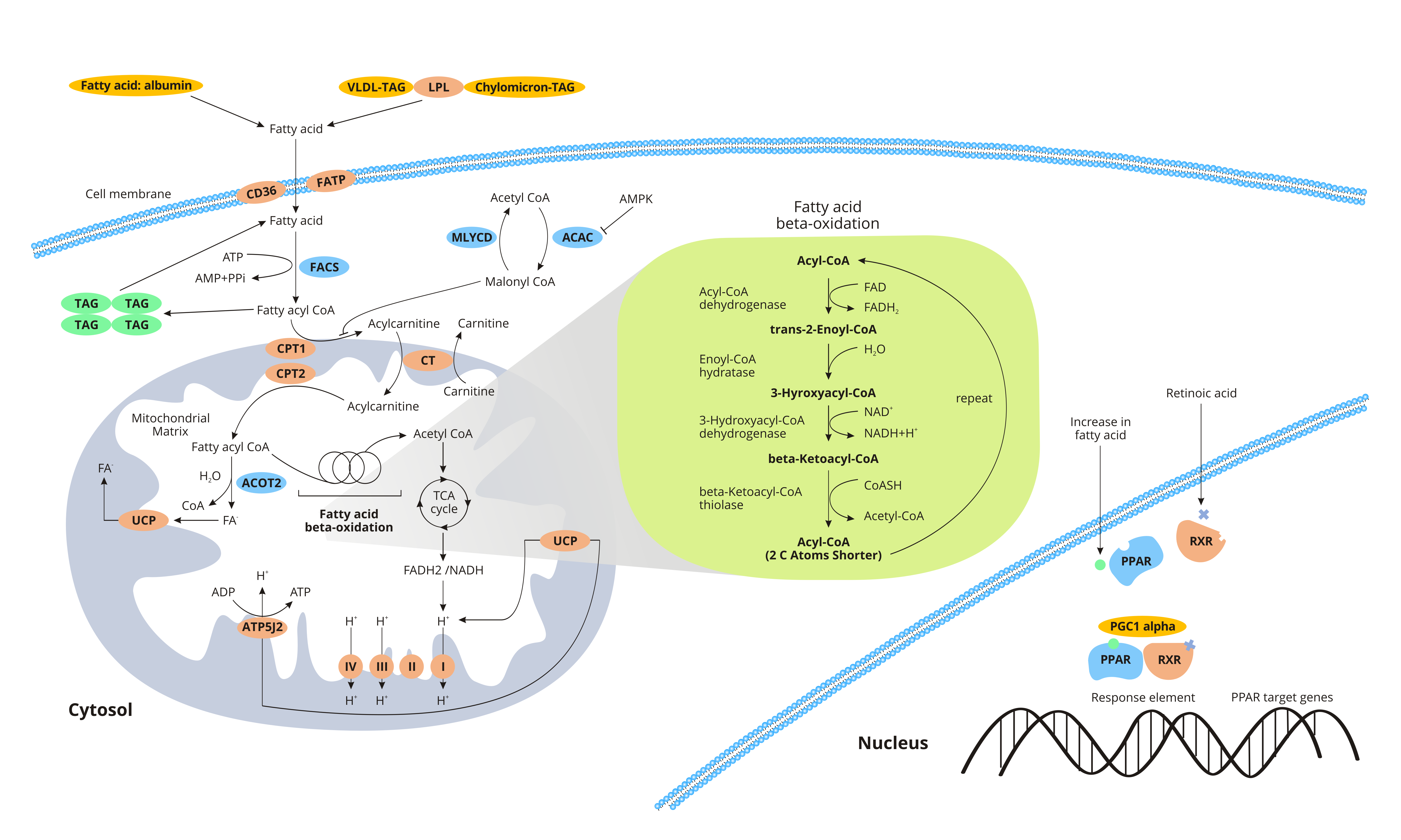
What Is Myocardial Fatty Acid Metabolism?
Myocardial fatty acid metabolism is the process by which free fatty acids entering cardiac cells undergo beta-oxidation in the mitochondria of cardiac cells to provide energy for the mechanical activities of the heart.
The Function of Myocardial Fatty Acid Metabolism
The beta-oxidation of long-chain fatty acids in cardiomyocyte provides the bulk of energy to sustain the continuous contractile activity of the heart and the ion concentration gradient in and out of cardiomyocytes.
The Process of Myocardial Fatty Acid Metabolism
Free fatty acids (FFAs) enter the cardiomyocytes by passive diffusion or by protein-mediated sarcolemmal transport that includes a fatty acid translocase or plasma membrane fatty acid-binding protein. The bulk of fatty acids entering the cell are quickly oxidized in mitochondria, while a small portion is converted to structural lipids or stored as intracardiac triglycerides.
First, fatty acyl CoA synthase catalyzes fatty acids into fatty acyl CoA. Carnitine palmitoyltransferase 1 (CPT-1) stimulates the catalysis of fatty acyl CoA and carnitine into acylcarnitine. Acylcarnitine subsequently enters into the mitochondrial matrix through the mitochondrial membrane via carnitine acyltranslocase. Under the action of CPT-2 on the inner side of the mitochondrial membrane, the lipid acylcarnitine releases carnitine and fatty acyl CoA. The released fatty acyl CoA undergoes beta-oxidation and generates NADH flavin adenine dinucleotide (FADH2).
Diseases and Abnormal Myocardial Fatty Acid Metabolism
With an in-depth study of myocardial fatty acid metabolism, scientists have found that many diseases are accompanied by changes in myocardial fatty acid metabolism. Regulating the metabolism of cardiac fatty acids is beneficial to the treatment of cardiovascular diseases. Studies have shown that the occurrence of diabetic cardiomyopathy is closely related to abnormal fatty acid metabolism of the heart. Its main manifestation is that the diabetic heart significantly increases the uptake & oxidation of fatty acids in cardiomyocytes and the accumulation of TAG in cardiomyocytes. Both the two conditions can lead to cardiomyopathy and impair heart function. Therefore, measures that regulate the metabolism of fatty acids in myocardium should be helpful in the prevention and treatment of diabetic cardiomyopathy.
In addition, some other diseases such as ischemic heart disease, cardiomyopathy, and heart failure, are closely associated with cardiac fatty acid metabolism. These findings suggest that the regulation of myocardial metabolism of fatty acids should be considered in the selection of prevention and treatment.





